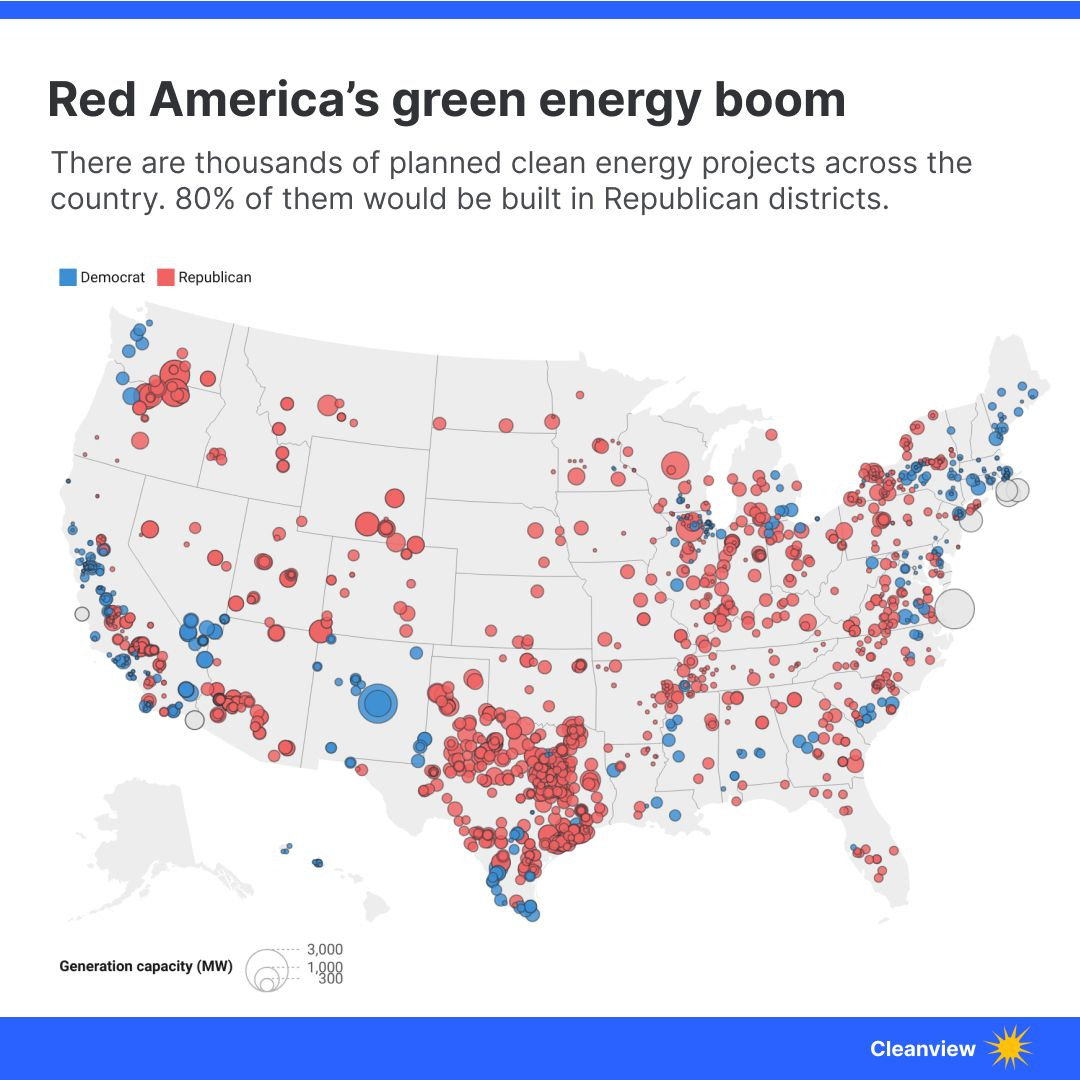The Most Important 30 Days of This Decade Are Ahead of Us
It's time to pay attention
tl;dr The Senate will be debating their mega-bill this month. It will have sweeping consequences. I’m creating one visual story every day this month to communicate what’s at stake and sharing it here and on social media.
Last month, the US House passed a mega-bill that had been anticipated since last November. Most clean energy and climate advocates expected it to be bad. After all, President Trump has been railing on wind turbines for decades. On the campaign trail he, and other Republicans, promised to repeal the Inflation Reduction Act. But the bill was far worse than most advocates imagined.
It’s hard to overstate how important this piece of legislation could be to America’s clean energy and climate future. Recent modeling found that the bill could boost emissions by one billion tons per year by the year 2035. That’s equivalent to Japan’s annual emissions—the 5th largest emitter in the world.
But the bill is not law—not yet at least.
Over the next 30 days, the Senate will debate this mega-bill. Already multiple Senators have come out and said the House bill goes too far in repealing the IRA. North Carolina’s Thom Tillis worries about the impact on clean energy manufacturing investment and jobs in his state. Alaska’s Lisa Murkowski worries about the impact on energy prices. Utah’s John Curtis was at a battery factory, praising the IRA, just last week.
All of that’s to say there’s hope. Any of these Senators can demand revisions to the bill. They can vote to block it outright. Just a few holdouts could tank the legislation.
For anyone that wants to protect our climate future, that’s an opportunity.
30 days of stories about clean energy in America
Everyday for the last two weeks, I’ve been creating visual stories about this bill and its impacts and sharing them on social media. My goal has been to communicate a few ideas: First, I want people to understand the stakes and implications of this bill; second, I want to share messages about this bill that might resonate with people who don’t care at all about climate change; and finally, I want people to know that they can do something to stop this.
The response has been inspiring: Thousands of people have engaged with the stories. I’ve received dozens of messages from people telling me about calls they’ve made to their Senators. Collectively, these stories have reached more than a million people.
Over the next 30 days I plan to continue creating one visual story everyday. I think many of them will resonate with readers of this newsletter, so I plan to post some, most, or all of them here. If you have thoughts on the frequency, I’m all ears.
I also hope that some of you will join me in telling and sharing these stories—with your friends, family, and Senators. In a democracy attention is the most powerful source of political capital. What we choose to pay attention to—what we convince others to pay attention to—shapes our politics, which in turn shape our future.
For now, here’s today’s story in one picture and 25 words:
More stories
Here are some of the stories that I’ve posted over the last two weeks:



I commend your optimism and fight but I would be surprised to see deep changes in the senate version of the house bill. The same lack of salience of the energy issue compared to SALT/medicaid, and the fact that any IRA changes would have to be paid for, makes it unlikely that there will be major changes. I hope I am wrong.
Great project! The baddies have been winning the messaging war, and these short stories are helpful against all the disinformation.